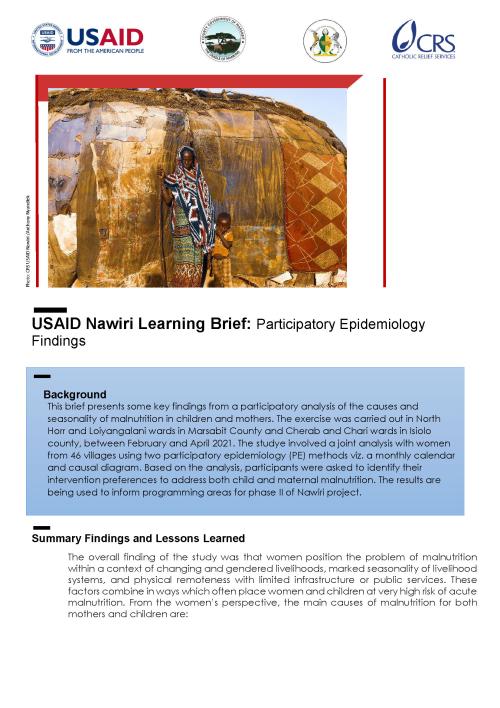This study explored how communities perceive the causes and changes in malnutrition prevalence by season for children and mothers. It involved a joint analysis with women using two participatory epidemiology data collection methods—monthly calendars and causal diagrams. Participatory epidemiology is an approach that uses participatory data collection methods to understand community perceptions of disease causation. Participants identified negative coping strategies, gender inequality and high labor burdens, human disease, and lack of income as the main causes of malnutrition for women and children. They situated issues within a context of changing and gendered livelihoods, significant differences in livelihood systems by season, and physical remoteness with limited infrastructure and public services. These factors combine in ways that often place women and children at very high risk of acute malnutrition. The findings underscore the need to develop context-specific interventions in dialogue with communities, and will inform future interventions.
Learning Brief
Full Report(s)
